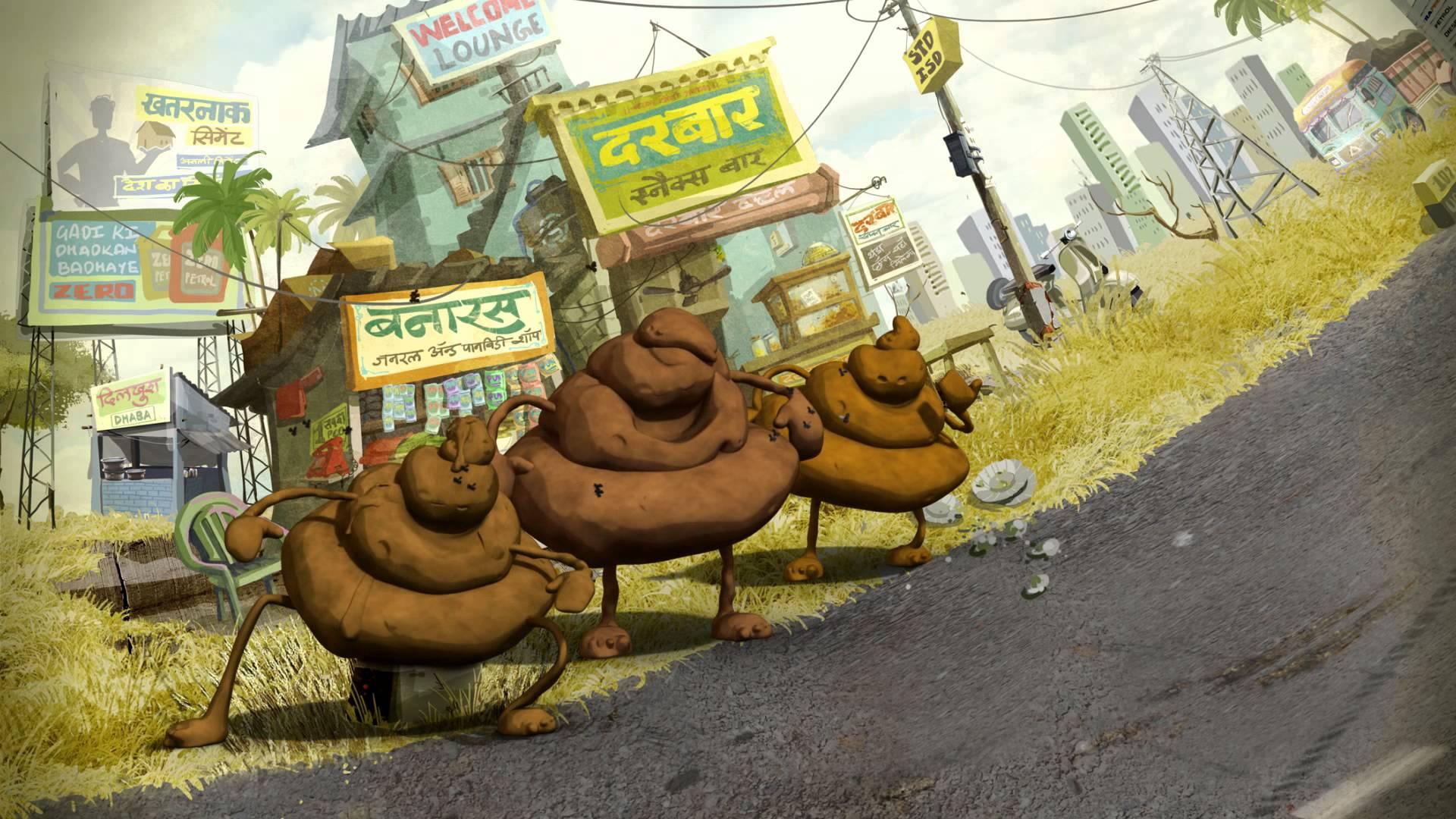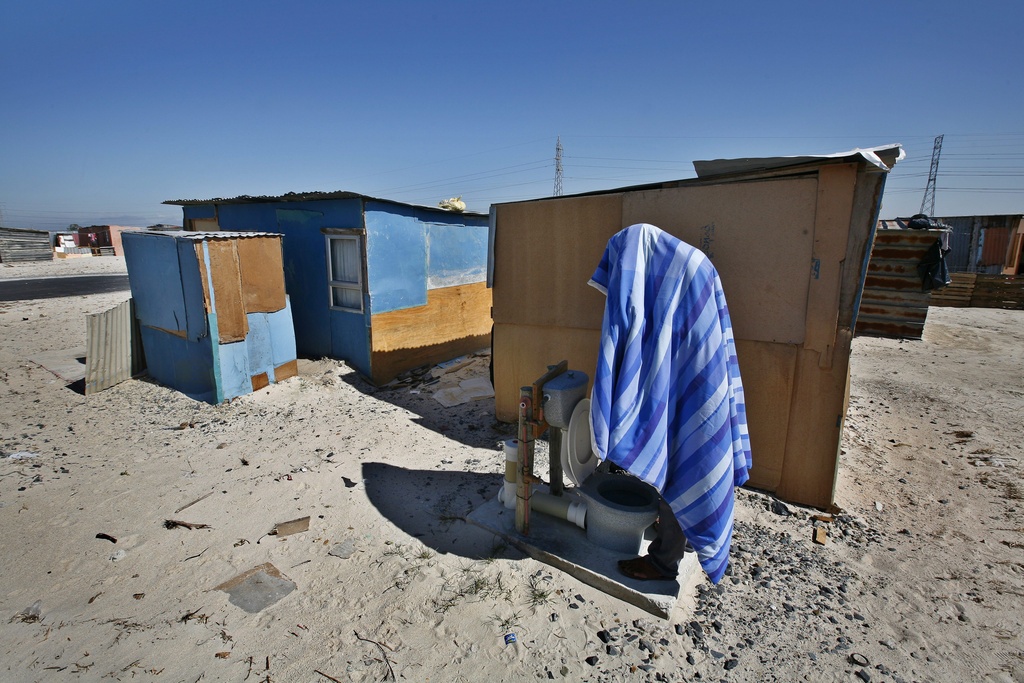Swiss WC could offer relief

Sit, go, wipe, flush. Virtually anywhere, anytime. What many take for granted would be a luxury for 2.5 billion people. The makers of a new toilet prototype think they have the answer. Now, if they can just solve some key issues…
Touted as a product for “washers and wipers”, the Blue Diversion Toilet has a holder for toilet paper and a hose for people who prefer to clean themselves with water. There’s also a built-in sink for hand-washing.
That’s the concept anyway. A long way from the labs where it was developed with Swiss technology, the toilet has since undergone field tests in Kampala, Uganda, in 2013, and in Nairobi, Kenya, in 2014. And not all the results were as expected.
“Usually you have a latrine and you’d have to either bring your own water or walk to the nearest water pipe to clean yourself afterwards,” Mark O’Keefe, a social scientist who worked with the Swiss-based Eawag aquatic research instituteExternal link to test the Blue Diversion ToiletExternal link, told swissinfo.ch.
“Having a facility where you have clean water to wash your hands or for anal cleansing, or for women during menstruation – these were features that people valued most highly,” said O’Keefe, whose team collected feedback from hundreds of people in Kenya and Uganda.

More
Holy crap!
He said that testers also appreciated the design of the squatting pan, which has a handrail. What users didn’t like so much was the sight of droppings. The Blue Diversion Toilet is “container-based”, so everything stays in the bucket until someone comes to collect it.
“People didn’t really like feeling close to the faeces, and I think that’s an issue that we definitely need to improve. Either design it so that people can’t see it, or can see it less. I think it definitely puts people off using a facility if they feel that they’re too close to the waste,” O’Keefe said.
The design team is looking into using a non-stick material to help the waste slide down into the container and out of sight. Another issue was the smell, but O’Keefe says that’s something that a ventilation pipe can improve. He also noted that the electronics and software could be more robust. Lastly, they need to figure out how to prevent mud from clogging the mechanism.
Open defecation
Even if the makers of the Blue Diversion Toilet manage to perfect its design, how much appeal will it have in target countries?
In India, meanwhile, UNICEF is waging a war on open defecation – currently practised by 594 million, or 46%, of the local population. Its colourful “Take Poo to the LooExternal link” campaign urges people to help prevent disease by doing their business more hygienically.
And while many people in India have no access to a toilet, it would seem that others simply prefer going outside.
“The main reasons for this are lack of awareness and lack of monetary resources to have a toilet in the house,” New Delhi sanitation expert Bindeshwar Pathak of the Sulabh International Social Service OrganisationExternal link told swissinfo.ch.
He added that the habit was socially sanctioned as a result of a religious text saying that “one should defecate outside one’s house at a distance where an arrow released from a bow falls – which meant approval of defecation in the open”.
Pathak himself has invented a two-pit, pour-flush compost toilet to eliminate the need to engage people [known locally as “scavengers”] to handle the waste.
The “Mahatma Gandhi Clean India Programme” – a multi-million-dollar sanitation project – is meant to make manual scavenging obsolete by 2019, the year that Gandhi would have turned 150.
Technology
The Blue Diversion Toilet combines the technology of flush and dry toilets. It uses some water, but it doesn’t need to be connected to a sewage system. The waste streams are kept separate, with the water recycled on site. The urine and faeces are treated at an off-site facility.
The idea is that about ten people would be using a toilet per day, and that the waste would be collected every two or three days. For public facilities, cleaning and regular maintenance could be a source of jobs. Treating the waste and turning it into fertiliser could also have business potential.
Made of about 600 different parts, the Blue Diversion Toilet prototype cost CHF12,000 ($12,163). The goal is to produce it with just 50 parts for CHF500 and sell for CHF700 within three to five years.
The developers say that would be affordable enough for potential franchisers as well as some private households. The suggested cost is about five cents per person per day.
But Evariste Kouassi Komlan, senior adviser on water, sanitation and hygiene issues for UNICEF, thinks that the toilet itself might be too expensive.
“The initial investment of $700 would be a challenge for many households, especially when there are currently cheaper options available,” Komlan told swissinfo.ch, citing the type of toilets used in emergencies or refugee camps.
His other main concern is maintenance and emptying, which he predicts could be problematic. Another hurdle would be acceptance at the household and community levels, Komlan said.
“It seems like it’s going in the right direction, in terms of the low volume of water necessary, and the re-use of water, faeces and urine. I believe the Blue Diversion Toilet has the potential to be used, but there is a long road ahead.”
Blue Diversion Toilet
Funded by the Bill & Melinda Gates Foundation, the Blue Diversion ToiletExternal link was developed as part of the “Reinvent the Toilet Challenge” – a drive to improve sanitation sustainably. Some of the solutions include solar-powered, charcoal-creating and water-recovering loos from the US, Britain and Canada.
The Blue Diversion Toilet was developed by Swiss aquatic research institute Eawag in collaboration with Austrian design firm EOOSExternal link. Bill Gates gave the Blue Diversion Toilet special recognition for its “outstanding design of a toilet user interface”. In 2014, it won a Global Honour Award from the International Water Association. The toilet made an appearance at the 2014 Biennale architecture exhibition in Venice, Italy. Now it’s in Germany for the “Welcome to the AnthropoceneExternal link” exhibition at the Deutsches Museum in Munich.

In compliance with the JTI standards
More: SWI swissinfo.ch certified by the Journalism Trust Initiative












You can find an overview of ongoing debates with our journalists here . Please join us!
If you want to start a conversation about a topic raised in this article or want to report factual errors, email us at english@swissinfo.ch.